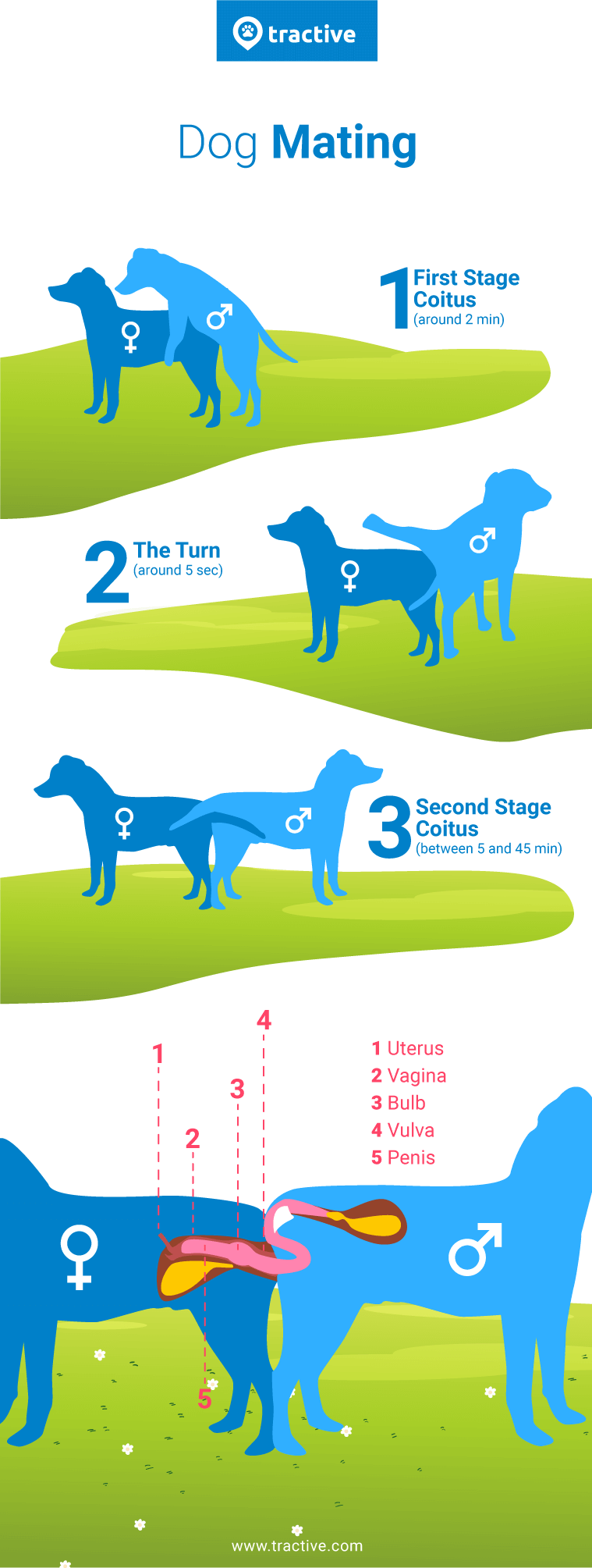The Dog Mating Process Explained
Is your dog trying to "make love" to everything in sight? If so you may have a pup with a strong mating drive - that seriously shouldn't be underestimated! Learn the basics of the dog mating process here, plus how to be a responsible pet parent and keep them safe.
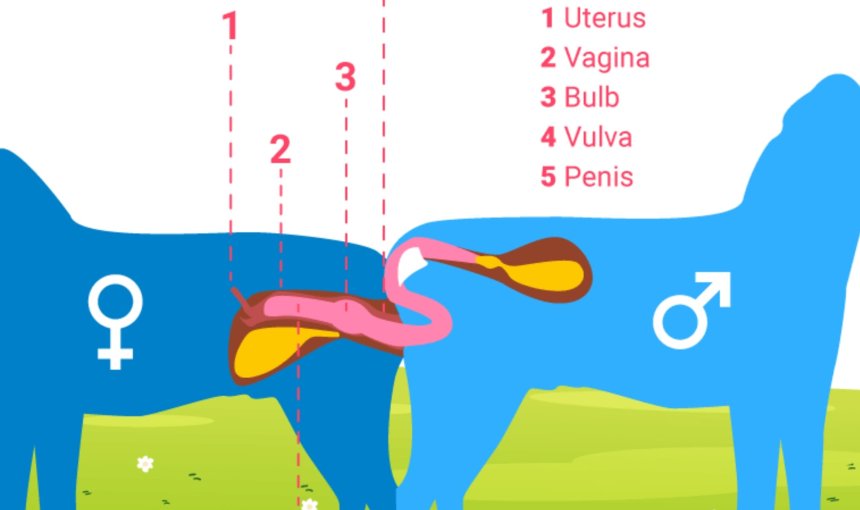
Once dogs reach the age of sexual maturity, almost nothing will stop them from trying to fulfil their strong reproductive instincts. If given the opportunity, dogs that haven’t been spayed or neutered may take part in this natural activity, which can result in a litter of puppies. So in case you’re wondering how the dog mating process works, we’ll break it down for you below.
Our pro tips for dealing with a dog that tries to mate:
- Never separate a male and female dog during the mating process
- Spay or neuter your dog to manage their behavior and prevent unwanted pregnancies
- Use a GPS dog tracker to better keep tabs on your dog’s location and activity

Find out how your dog spends their time.
Read more- When do dogs mate?
- Do male dogs go into heat?
- How do male dogs pick up on female dogs being in heat?
- The dog mating process
- What happens after mating?
- How can I prevent my dog from getting pregnant?
- Unplanned dog pregnancy? What you could consider with your vet
- Can I breed my dog during her first heat?
- Responsible breeding practices
- Spaying and neutering
When do dogs mate?
The mating process typically begins when a female dog, or “bitch,” enters her heat cycle, also called estrus. This usually starts at around six months of age, though it varies depending on the breed and individual dog. Dogs go into heat twice a year on average, and during this time, are most receptive to mating.
During their heat your female dog may want to go outside or run away more often, as this Reddit user shares:

Source: Reddit
Other signs that a female dog is in heat include behavioral changes, such as increased affection or restlessness, and physical signs like swelling of the vulva and a bloody discharge.
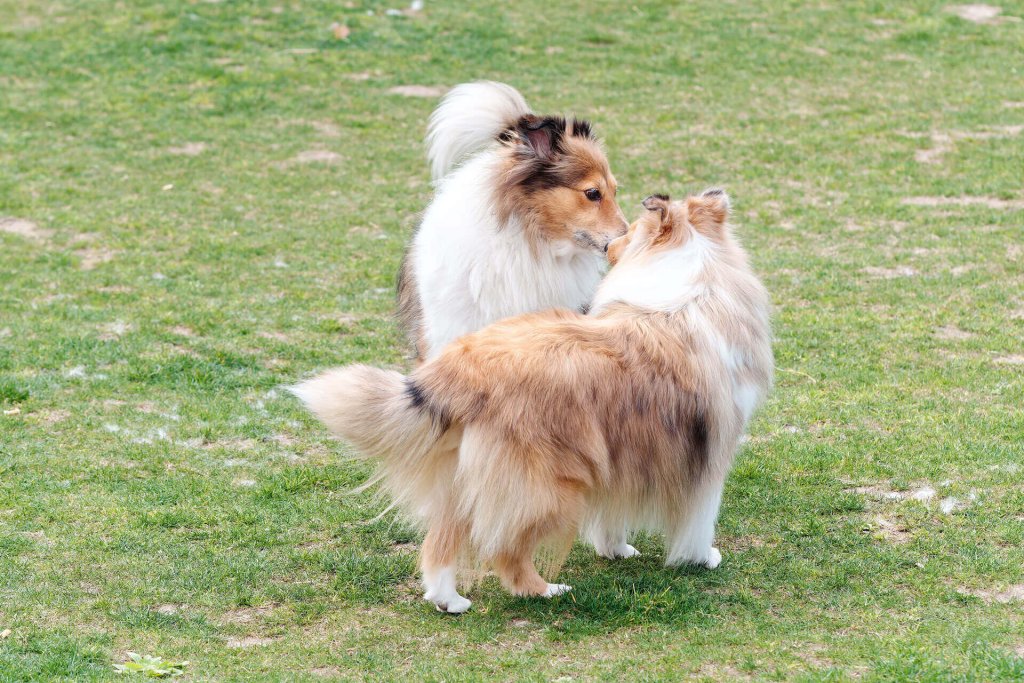
Do male dogs go into heat?
No, male dogs don’t go into heat. Being ‘in heat’ specifically refers to the estrus stage of a female dog’s reproductive cycle, during which she’s receptive to mating and could therefore get pregnant. While they don’t have a heat cycle, male dogs can mate all year round after reaching puberty at around 6 months old.
Although male dogs don’t go into heat, keep in mind that a female dog in heat can have a major effect on your male dog.
How do male dogs pick up on female dogs being in heat?
Male dogs will pick up the scent of female dogs in heat thanks to a special pheromone known as Methyl p-hydroxybenzoate. This smell can make your male dog crazy – especially if he’s intact, he’ll become sexually aroused and may put his entire focus on pursuing the female dog. Your male dog might even forget to eat or drink or even escape from home to find a mate.
If your dog keeps running away, a GPS dog tracker could be a lifesaver.
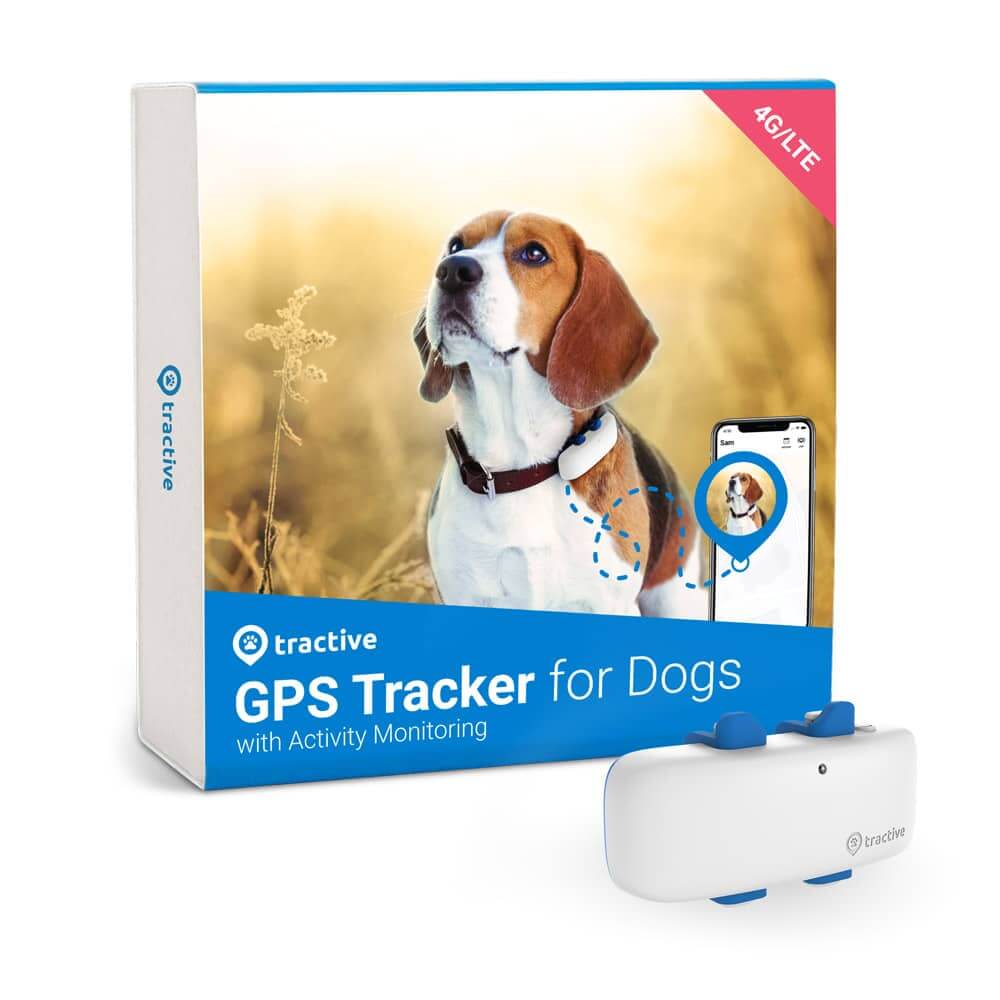
Always know where your dog is
Follow every step in real-time with unlimited range. Get alerts if they wander too far. Keep them happy & healthy with Wellness Monitoring. And let others – like walkers or sitters – keep an eye on your dog too.
The dog mating process
The mating process involves courtship behavior, which includes sniffing, licking, and other signals exchanged between the male and female. Once the female is receptive, the male mounts her, and mating occurs. The different stages and duration of the dog mating process are as follows:
- First Stage Coitus (approximately 2 minutes)
- The Turn (approx. 5 seconds)
- Second Stage Coitus (5-45 minutes)
First, the male dog mounts the female dog (first stage coitus). Should they keep this initial position, they would suffer from severe cramps.
For this reason, they will change positions (the turn), and the dogs will continue mating (second stage coitus) as illustrated in the infographic below. The uterus, vagina, bulb, vulva and penis are all involved in the sexual act between dogs.
During the second stage of coitus in dogs, part of the male dog’s penis enlarges, while the female’s muscles contract. This creates a sort of lock or ‘tie’ – where the male and female are stuck together for some time1. This process can last up to 30 minutes and…yes, we get it, it does look embarrassing for us humans.
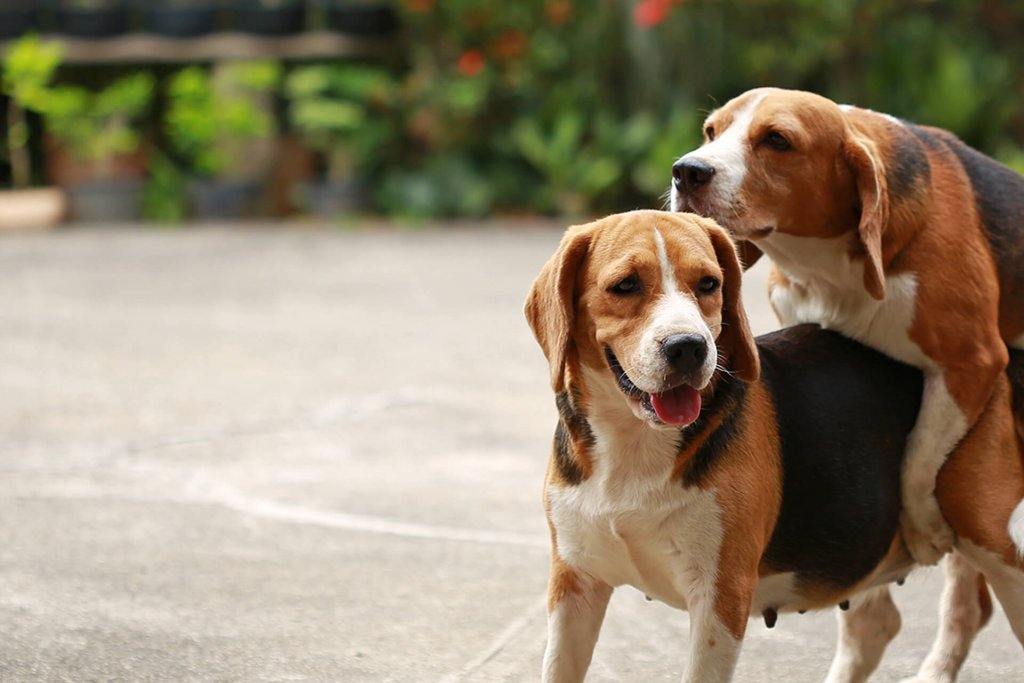
Never attempt to separate dogs during the mating act, since this can lead to serious harm to one or both of the dogs.
What happens after mating?
After mating, pregnancy is not always guaranteed, but it is possible. Dog pregnancies typically last around 63 days2. If you are planning to breed your dog, keeping a close eye on her health is crucial. Regular vet check-ups can help confirm pregnancy and ensure everything goes smoothly.
How can I prevent my dog from getting pregnant?
The most effective way to prevent pregnancy is to spay your dog. If she’s in heat and hasn’t been spayed, keep her away from male dogs and never leave her unsupervised outdoors. Dog diapers are useful for controlling discharge but won’t prevent mating, so supervision is always necessary.
Unplanned dog pregnancy? What you could consider with your vet
Despite your best efforts to prevent it, your furry friend could become pregnant. Here are your options, in case of an unplanned dog pregnancy:
- Abortion shot: This option is not without risks and should be only used in extreme emergency cases.
- Hormonal suppression: With this treatment, one can provoke various uterus illnesses to the female dog. Should this option be the only way, your vet is only allowed to give the shot during the hormonal pause period. (In order not to harm your dog’s uterus.)
- Spaying the female before the puppies come to full-term.
In all situations, always make sure to work with your vet. Your dog’s health and well-being relies on it.
Can I breed my dog during her first heat?
It is generally advised not to breed a dog during her first heat cycle. Her body is still maturing, and breeding during her first cycle could lead to complications. Breeding should only be done with the guidance of a vet, after your dog has reached full maturity, which varies by breed.
Responsible breeding practices
While the dog mating process is natural, it’s important to consider the responsibility that comes with it. Breeding dogs should be done thoughtfully, ensuring both the mother and the potential puppies will receive the proper care and attention. Also, remember that overpopulation is a serious issue in many areas, so always consult with your vet about whether breeding is the right choice for your dog.
Spaying and neutering
If you aren’t planning on breeding your dog, consider spaying or neutering to prevent unwanted litters. These procedures also have many health benefits for your dog, including reducing the risk of certain cancers and unwanted behaviors.
Now that you are aware of the dog mating process, learn more about your furry friend’s behavior on the Tractive blog:
